By Bob Shell
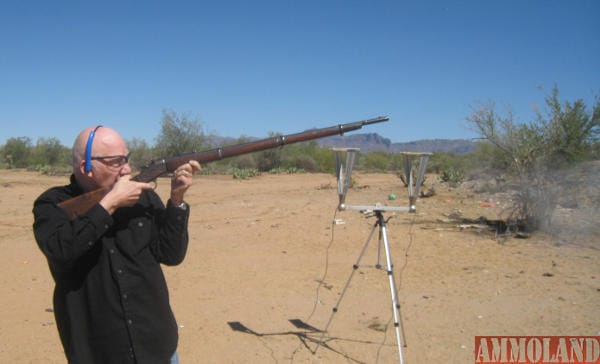
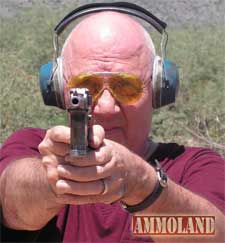
Apache Junction, AZ -(AmmoLand.com)- With the potential of flexibility in reloading ammunition, one area that is often overlooked is the reduced loadings. There are many reasons for using such loads in your guns.
The most obvious is the recoil reduction that they produce. For example you can take a 30-06 ammunition and load it to 30-30 velocities without much problem. That reduces the recoil and is still powerful enough to harvest deer. In fact, there are some reduced loads offered by the factories in a few of the more popular ammo rounds. There are several ways to accomplish this though a couple are not well known and seldom used.
The most obvious way is to use a small charge of a fast burning powder. Done properly it works well especially with cast bullets. One of my favorites is using 10 to 12 grains of Unique Smokeless Powder with a 165-grain cast in a 30-06. I obtain excellent accuracy and it is a good way to use old cases. Flake powders in general work well with reduced loads because they are easy to ignite and take up space.
I use such powders as Alliant Herco, Green Dot, Red Dot, and to a certain extent, Blue Dot. The IMR 7 and 800 powders also work okay with reduced loads. A powder that came out a few years ago is Trail Boss. It is a very low-density powder and is possibly the best powder for rifle cases and cast bullets. I have shot a lot of different rounds with Trail Boss and cast bullets with excellent results. It is an extremely consistent powder for that use. With magnum cases, IMR Trail Boss is the best choice as it takes up a lot of space which aids in consistency. In addition, cast bullets are more desirable because they are less expensive and require less pressure to push down a barrel. Generally, they produce excellent accuracy. Virtually all of my modern rifles has at least 1 or 2 reduced loads worked up for them. Where legal, they make fine small game loads as they don’t destroy much meat while getting the job done.

Lightweight Bullets
Another thing to reduce power along with the powder is to use a lightweight bullet. All factors being equal, a light bullet produces less recoil and range then a heavier slug. A good example is a 110 gr bullet meant for a 30 carbine. It can be used in any 30 caliber rifle with good results.
If you want to go up in power somewhat but still want a reduced load then a rifle powder that is not generally used might be the ticket. If you take a full size case such as a 30-06 or 308 then you might try some 4198 or a similar burning powder such as Alliant Reloader 7. Depending on the case and load, you will have a load that is on the low end for hunting. You can drive a 150 grain bullet at 30-30 speeds which will do for deer and cut down on recoil.
For such use I would go with a round nose or flat point as they would open up easier and long range isn’t on the table so a spitzer bullet isn’t necessary. There is a large area that you can experiment with. I have a client that owns a 35 Whalen which has too much recoil for his liking. So I use 4198 Powder with a Hornady 200 gr round nose at 2000 FPS and it gives him the results he desires. Any deer with a hundred yards or so is in serious jeopardy. With a magnum round such as a 7 mm or 300 then you might want to use a powder in the 4895 area.
If you take a slow burning powder and reduce it, then there is a risk of inconsistent loads and possibly a bullet stuck in the barrel. That is why some manuals warn not to use less than the minimum amount listed. There are a few factory loads that work that way. This is an area that you can experiment in, just be sure you understand the characteristics of the powder being used.
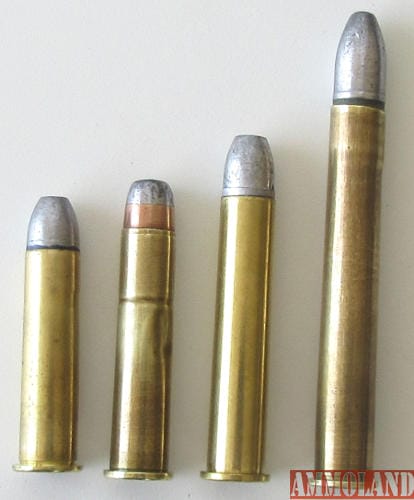
Shorter Case
The third way to reduce a load is to use a shorter case. The limitations are it has to be a straight was case and headspace on the rim or belt. By using a shorter case less powder is needed and it is easier to make a real light load. For example in a 357 magnum, you can use a 38 short Colt case. It has much less capacity and for real light or gallery loads it will be ideal. The same by using a 32 S & W short case in a 327 Federal magnum gun. If you have a 45-120 it would be difficult making a light load as there is so much air space. Why not use a 45-60 or 45-70 case. It wouldn’t have an adverse effect on accuracy and would be much easier to work with. Recently Starline came out with 41 special brass which is nothing more than a shortened 41 mag.

The only reason I can think of is to make it easier to produce light loads. There is a round known as the 375 super mag which is generally used in a Dan Wesson revolver. It is nothing more than a shortened 375 Winchester round. With full loads, it is still potent enough for deer size game. If having extra rounds is important to you, why not use the 375 super in the rifle. Since they are shorter, you could carry more and they might feed in the rifle. That is something that you would have to determine in your gun.

Slow Powder
A forth way to make reduced loads is to use a powder that is considered too slow for that particular round. An example is the 308 Winchester round. The normal powders are in the medium burning range such as 4895 or WW 748 and many similar powders. They will produce the top velocities for hunting loads. You can reduce them a little but not much as a reduction that is too extreme will cause inconsistent loads and in extreme instances may cause a bullet to get stuck in the barrel. So one way to cut down on velocity is to use an extremely slow burning powder such as an IMR 4831 or something similar. They are so slow that you can’t build up enough pressure to obtain top loads. Of course, you want little or no airspace because too little powder will cause problems. Depending on the gun you may get good accuracy. Of course, this will not work in large magnum cases as they already need slow burning propellants to properly function. In most straight cases it will work ok. This may not be the best option but it is workable.
As in any type of reloading some experimental work may be required. If everything worked perfectly every time then reloading wouldn’t be a challenge and everyone would be doing it.
When using slow powder be sure to know you powders. For example if you use 60 grains of H-4831 in a 30-06 with a 110 grain bullet that will be a somewhat reduced load. However if you increase the bullet weight to 180 or heavier then you have a full power load. With large cases, that knowledge is important otherwise you can get yourself in trouble. A powder that is slow in one case would be fast in a larger round. For those of us who like to experiment there is a lot to learn in this area. Just be sure that you understand powders and use some common sense and you should be fine.
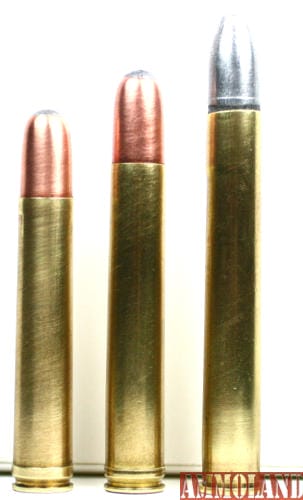
Chamber Inserts
Something that is seldom mentioned is the fifth way to use reduced power loads. That would be chamber inserts. I have seen them advertised occasionally and they are not common but will work.

One I have seen is a 30-carbine insert for a 30-06 rifle. Shooting a carbine round in a full size rifle will be pleasant as recoil would be almost nonexistent. You would be limited to a single shot and reloading would be fairly slow but for target work who cares. The big disadvantage with Chamber Inserts is they are not common and availability is definitely spotty. They are offered in a verity of rounds. A fairly popular one is a 32 ACP used with a 30-30, 308, or a 30-06. They work but accuracy may suffer. There are a couple that shoot 22 rim fires in a 45 revolver.
During WW l there was an insert known as the Pederson device. (read more about the Pederson Device here. ) It replaced the bolt in a 30-06 Springfield with a short 30 caliber round which turned out to be the 7.65 French Mas used in WW ll. In any event it had a 40 round magazine and fired in a semi auto mode but was brought out too late to be used. All of the material was destroyed except for a few that got by.
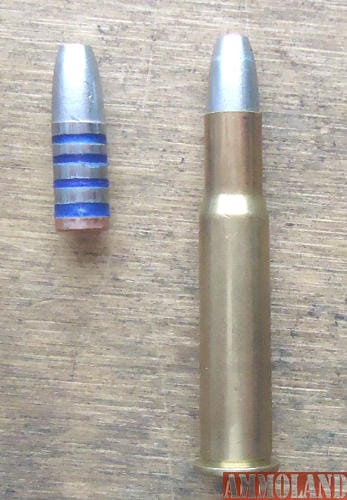
Substitute Powder
The sixth way is seldom used for various reasons but it does work. That would be using black powder or a substitute in a modern gun. There are definitely some disadvantages such as dirt and corrosion. Especially with black powder, you would have to clean the gun up often to maintain accuracy and functioning. The black powder and some of the substitutes will gum up the works quite rapidly. You will however lose power, which would be the object of using them.
A good example is the 45-70. With black powder and a 400 grain bullet, velocity will be around 1200 to 1300 FPS with a pressure of around 20,000 PSI. The same gun with a full power modern load will propel the same bullet out at 2,000 FPS while increasing the pressure up to 35,000 to 40,000 PSI. Such a load would destroy a black powder gun such as a Trapdoor Springfield Rifles.
Black powder would be a last resort and personally, I would not do it unless that was my only option and I really needed that reduced load.
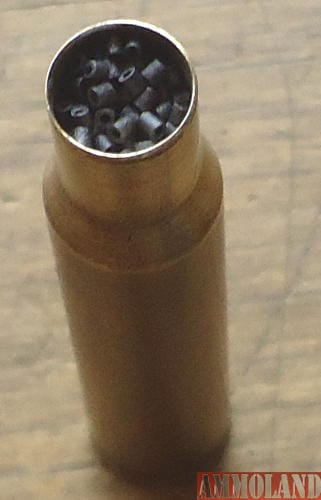
I have done a lot of blackpowder substitutes for info reasons and an example is the 270. With the rifle I used, a 130 grain was propelled out at 3100 FPS with H-4831. With black powder, velocity checked in at 1900 plus using about the same amount of powder. If you use black powder, keep in mind that there can be no airspace.
Airspace in a black powder load can cause it to explode rather than going off in a normal fashion. Some shooters who want to use light loads of black powder will put wadding in the case so no airspace exists. Done properly it will work fine in straight cases. I have never tried it but I would not advise using wadding with a bottleneck case and black powder. Since I haven’t done it, I can’t recommend it.
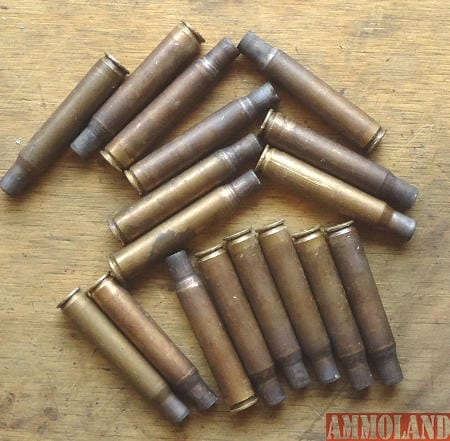
Another way to slightly reduce loads with black powder is to use a coarser grain of powder. For example, a revolver generally uses FFFG for it’s loads, but if you substitute either FG or FFG, you will get a little less powder in the case and it will burn slower. The reduction is minimal but noticeable. I did an extensive test using Blackhorn 209 Powder in modern bottleneck cases. Using a compressed load velocity was down in all of them though still potent enough to hunt. It is corrosive so be sure to clean up the gun afterwards. The data will be published in the near future for those who may be interested.
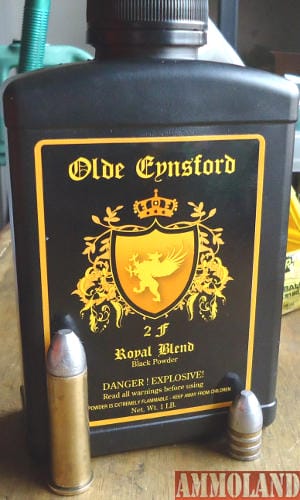
Recoil And Noise Reduction With Reduced Ammunition Loads
There are many reasons for reduced loads, including recoil and noise reduction. If a shooter is afraid of their gun, then their shooting will be poor. Flinching is caused by anticipation of recoil, which can be painful or noisy which can cause a flinch. There are other reasons for reduced loads.
A good example is a subsonic load in a rifle. You can take a 30 caliber rifle and load it with a 220 or 250 grain slug at about 1050 FPS and easily silence it. Don’t sell that load short. In the hands of a skilled sharpshooter, it can easily take out an enemy soldier at 200 yards or even further. With such a bullet, velocity loss is minimal and with the high sectional density of that bullet, a fatal wound can be inflicted at longer ranges. It does however drop a lot more than a conventional load. A good rifleman can deal with that issue with ease. Although not ideal, it can harvest a deer sized animal without scaring anything for miles around. I have worked with these types of loads and besides being deadly, they are accurate. I have shot a lot of small game with cast bullets in rifles with good results.
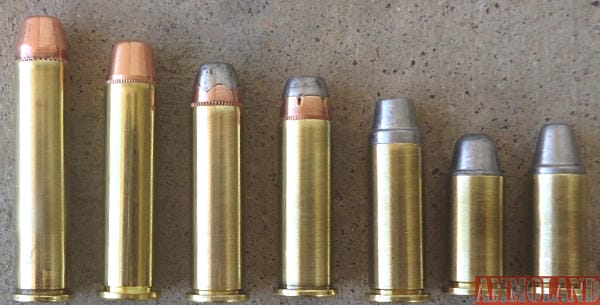
The best part of reduced ammunition loads is that they make great practice rounds for youngsters to shoot and such loads won’t hurt the shoulder.
About Bob Shell:
A Custom Reloader of Obsolete and Antique Ammo, Bob Shell, writes about the subject of Guns, Ammo, Shooting and Related Subjects. For more information, visit: www.bobshellsblog.blogspot.com.

I’ve seen Clays used in .308 to produce subsonic loads. I have lots of old shotgun powers, can they be used to make reduced loads in rifles? Does anyone know about reduced load data for Lovell D060 (AKA Buffalo Rifle)?
I load the 7.62x54R by using a load of 40 grains of 4831 behind a 150 grain bullet. It gets the velocity down to about that of a 30-30. For the short carbine Mosin it makes it much more enjoyable to shoot. I tried reducing the original powder that was in the russian military round that had steel cases and it didn’t work so well. Something to watchout for. The steel case requires a certain amount of pressure to seal against the chamber wall and reducing the original powder caused the case to break away from the chamber and cause… Read more »
Google Secondary Explosion Effect {SEE} before you keep shooting that load!!
Hi, inherited an 1873 mas french revolver my fathers uncle used in ww one. Forty years ago a local gunsmith used ? 44-40 or similar brass cut it down made 50 rounds that I plinked with about 12 each year. I have since misplaced the remaining ones and hoping to obtain another 50. Any assistance would be appreciated.
Regards, Wes
Hi Bob very interesting info, I wondered if you would be so kind as to offer me some help and guidance, it is my intention to buy a Henry original repeating rifle to use at my local club indoor gallery however there are muzzlevelocity restrictions at the range these are = muzzel velocity- 1705 ft/sec muzzle energy= 475 ft/lbs max and a maximum calibire .455. these maximum figures are very low for this type of rifle which comes in two different xalibres which are a 44/40 winchester or a colt 45, factory bullets of this size are twice the permitted… Read more »
I am looking for ammo for my Colt 32 DA. Looking like a rare bird! Google sent me to you. Help!
Happy Thanksgiving. Make America Strong Again, Donald. No sidestepping.